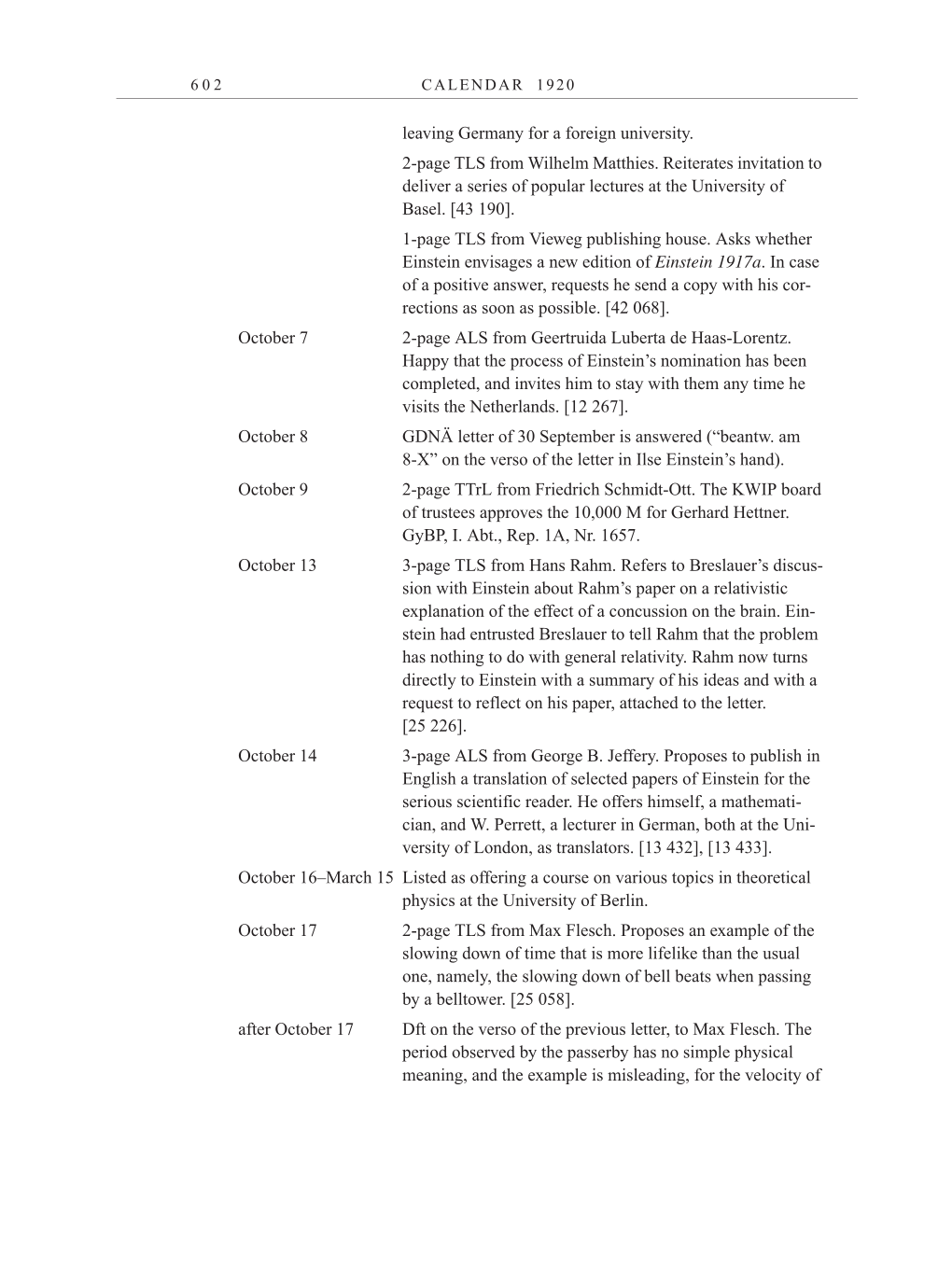6 0 2 CALENDAR 1920
leaving Germany for a foreign university.
2-page TLS from Wilhelm Matthies. Reiterates invitation to
deliver a series of popular lectures at the University of
Basel. [43 190].
1-page TLS from Vieweg publishing house. Asks whether
Einstein envisages a new edition of Einstein 1917a. In case
of a positive answer, requests he send a copy with his cor-
rections as soon as possible. [42 068].
October 7 2-page ALS from Geertruida Luberta de Haas-Lorentz.
Happy that the process of Einstein’s nomination has been
completed, and invites him to stay with them any time he
visits the Netherlands. [12 267].
October 8 GDNÄ letter of 30 September is answered (“beantw. am
8-X” on the verso of the letter in Ilse Einstein’s hand).
October 9 2-page TTrL from Friedrich Schmidt-Ott. The KWIP board
of trustees approves the 10,000 M for Gerhard Hettner.
GyBP, I. Abt., Rep. 1A, Nr. 1657.
October 13 3-page TLS from Hans Rahm. Refers to Breslauer’s discus-
sion with Einstein about Rahm’s paper on a relativistic
explanation of the effect of a concussion on the brain. Ein-
stein had entrusted Breslauer to tell Rahm that the problem
has nothing to do with general relativity. Rahm now turns
directly to Einstein with a summary of his ideas and with a
request to reflect on his paper, attached to the letter.
[25 226].
October 14 3-page ALS from George B. Jeffery. Proposes to publish in
English a translation of selected papers of Einstein for the
serious scientific reader. He offers himself, a mathemati-
cian, and W. Perrett, a lecturer in German, both at the Uni-
versity of London, as translators. [13 432], [13 433].
October 16–March 15 Listed as offering a course on various topics in theoretical
physics at the University of Berlin.
October 17 2-page TLS from Max Flesch. Proposes an example of the
slowing down of time that is more lifelike than the usual
one, namely, the slowing down of bell beats when passing
by a belltower. [25 058].
after October 17 Dft on the verso of the previous letter, to Max Flesch. The
period observed by the passerby has no simple physical
meaning, and the example is misleading, for the velocity of
